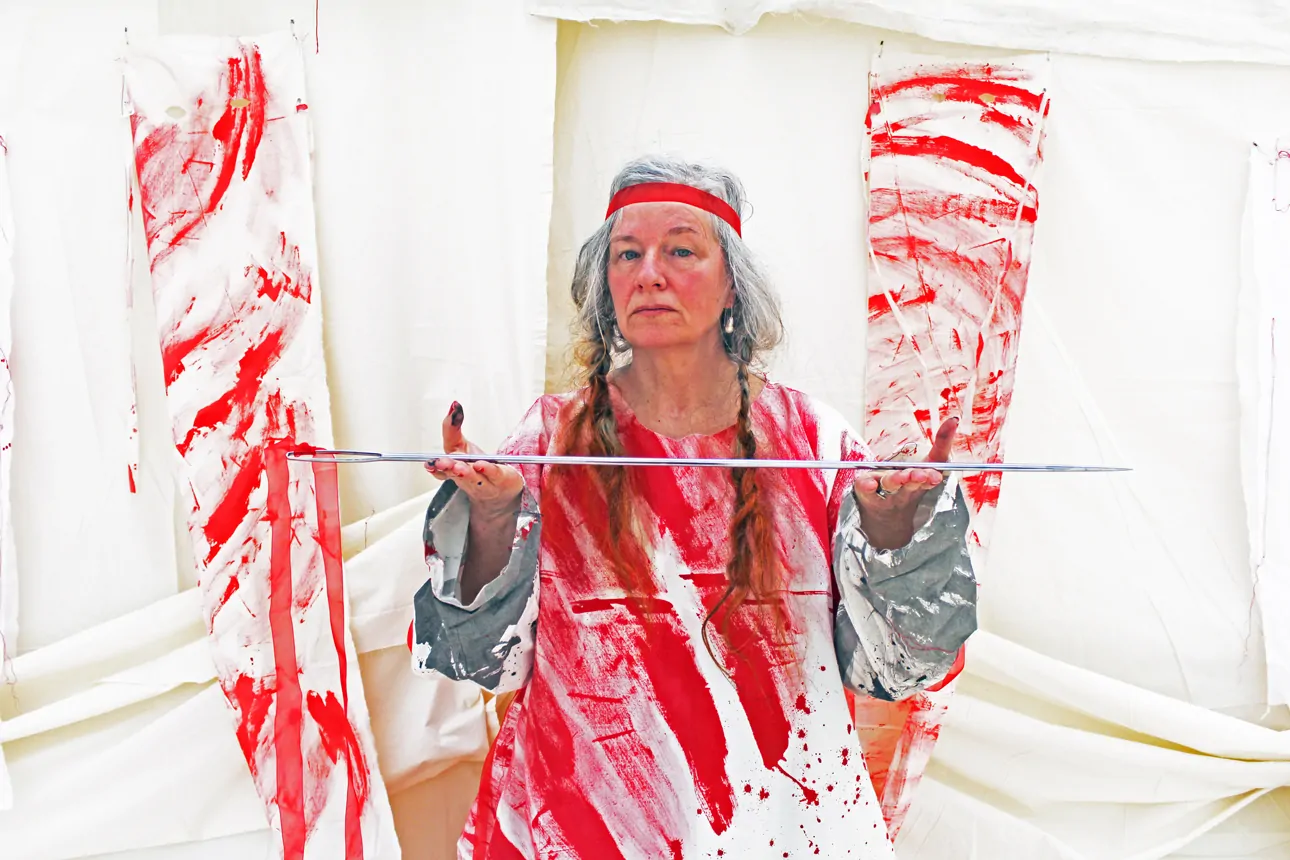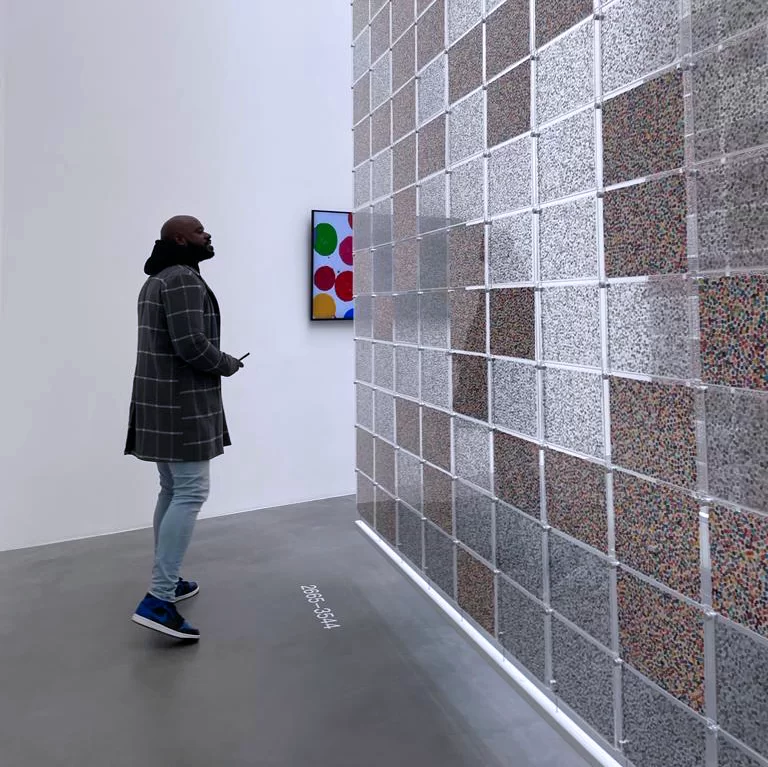The Romany-British artist stitches together personal history, cultural resistance, and institutional critique in immersive, multi-sensory installations.
In a world increasingly obsessed with binaries, categories, and lines drawn too sharply, artist Delaine Le Bas has spent decades dismantling them — one thread, one word, one performance at a time.
Entering one of Le Bas’s installations feels less like stepping into a gallery than crossing into an intimate, haunted territory — densely embroidered, layered with personal relics, fragments of history, and whispered stories too long silenced. The Romany-British artist’s work pulses with defiance, confronting not only personal trauma but also the larger, uncomfortable legacies of colonialism, exclusion, and cultural misrepresentation.
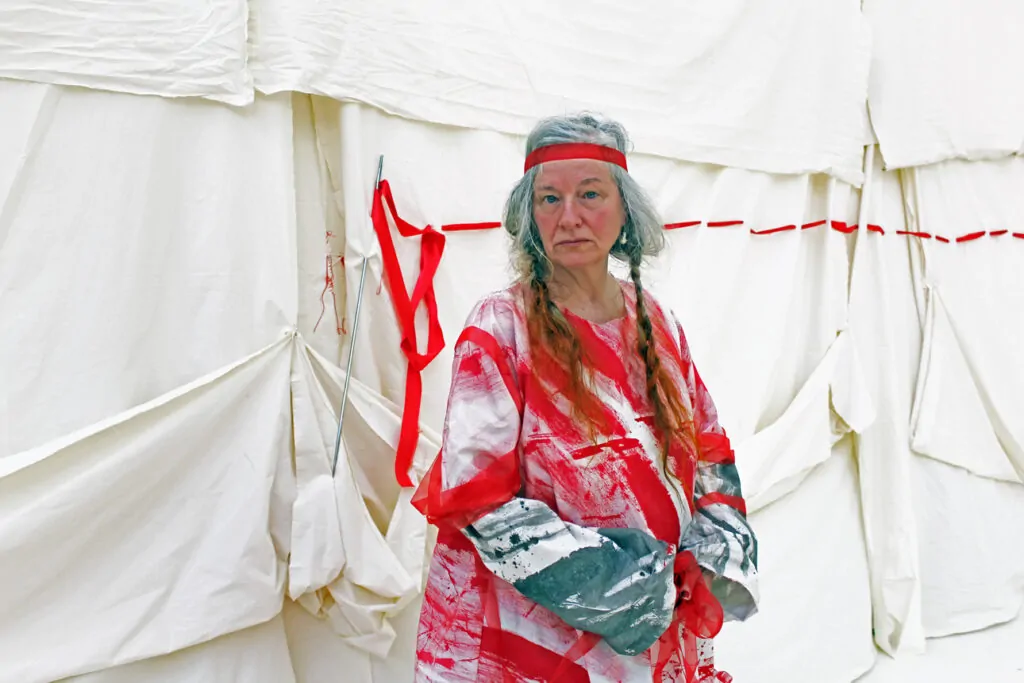
Courtesy of the artist and NCA (Newcastle Contemporary Art)
Credit Toby Lloyd
My practice has always been about negotiating space
Delaine Le Bas
“My practice has always been about negotiating space,” Le Bas says. Whether she’s constructing fabric rooms within the imposing architecture of European institutions or threading hand-stitched text across sprawling cloth, Le Bas creates what she calls “safe spaces” within structures that were never meant to include her. And yet, here she is — shortlisted for the Turner Prize, exhibited globally, and continuing to challenge the very institutions that now display her work.
A trained textile artist who first studied at West Sussex College of Art & Design before completing her master’s at Central Saint Martins, Le Bas brings both precision and ritual to her craft. Needles and thread, for her, are not simply tools — they’re instruments of memory, rebellion, and meditation. “Textiles can contract and expand,” she reflects. “A small piece of embroidery on a large cloth can be very loud in its content.”
Much of Le Bas’s work is shaped by her Romany heritage — a lineage long caricatured or erased by mainstream narratives. Yet rather than reproduce these ready-made myths, Le Bas insists on authoring her own. “Self-mythologising enables me to be the narrator of my own narrative,” she says. “Identity is so complex for so many that there are no set boxes for anyone.”
In her collaborative performances and installations — often created with the late artist Damian Le Bas, her husband and long-time creative partner — the audience is not simply a passive observer. Visitors may find themselves stitching into fabric, stepping across her intricate floor works, or leaving behind their own traces, becoming part of a living, ever-shifting archive of collective memory.
Now, as cultural institutions grapple with their own complicity and the slow work of repair, Le Bas’s practice stands as both critique and offering — an insistence that art can still create space for complexity, belonging, and truths that refuse to be boxed in.
In the following conversation, Le Bas speaks about negotiating contested spaces, the politics of fabric, the burden of representation, and the radical act of telling one’s own story — thread by thread.
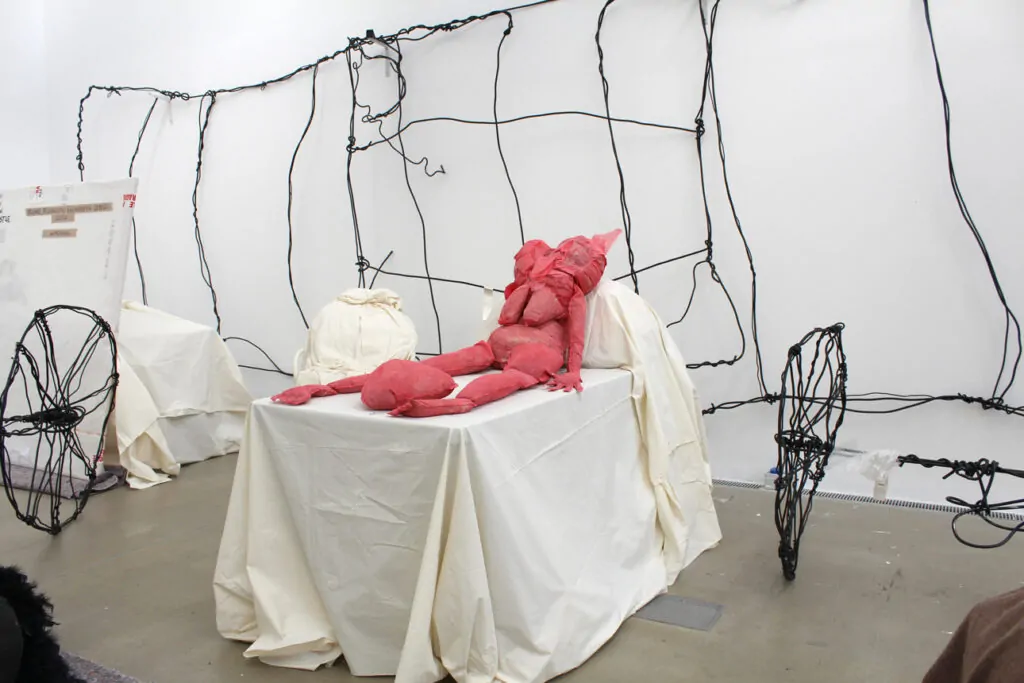
Courtesy of the artist and NCA (Newcastle Contemporary Art)
Credit Toby Lloyd
Your work often transforms galleries into richly layered environments that are both deeply personal and politically charged. How do you begin building these immersive spaces – and where do you locate the initial spark of a new installation?
Delaine Le Bas: The initial spark for an installation often starts with a visit to the space. It may also be because of what else the building contains, like in Secession, where the Beethoven Frieze was literally the other side of the wall. I think about the existing architecture, either working with that or thinking of how to create a ‘safe space’ within a building that has a history of oppression or colonialism; many institutional buildings have this legacy, sadly.
As an artist, I know this before entering these spaces and feel I need to negotiate the space with the architecture that I construct to place the work within this. I am acutely aware that even in recent history, an artist like myself with my background was not welcome in these spaces unless portrayed by someone else. The work itself may already be a seed of something, a small drawing, painting, a line of text, a photograph I may have taken, or a piece of fabric. Everything then comes together and begins to grow.
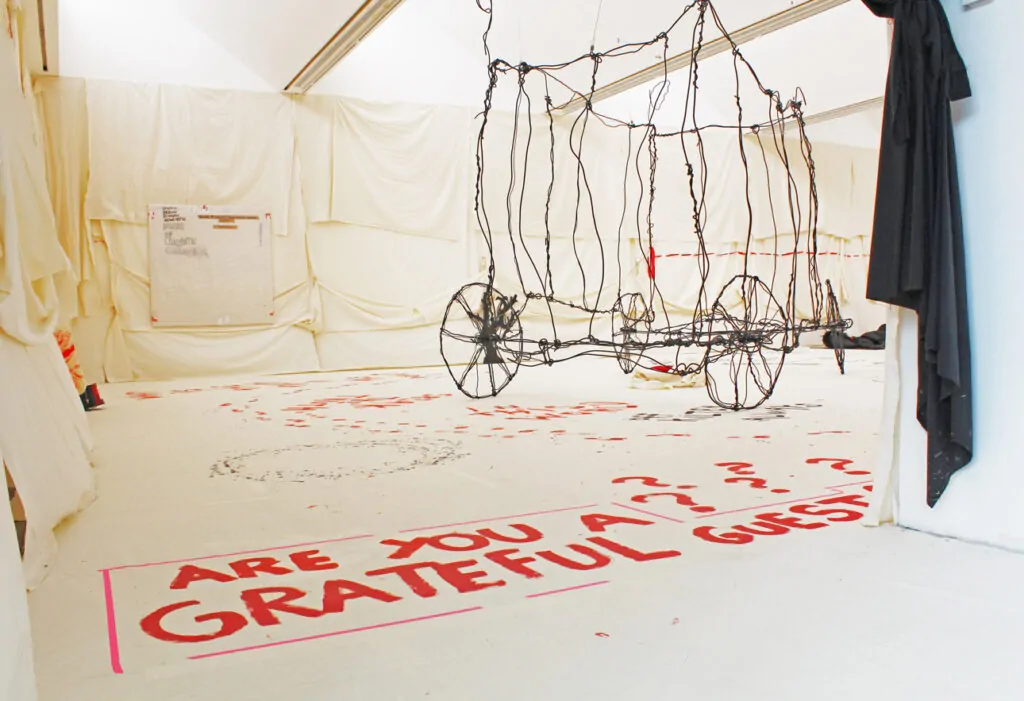
Courtesy of the artist and NCA (Newcastle Contemporary Art)
Credit Toby Lloyd
In Fabricating My Own Myth, the recurring red thread becomes a powerful metaphor for connection, lineage and resistance. How do you see the symbolic role of materials – thread, needles, fabric – operating in your broader practice?
Delaine Le Bas: I studied Textiles initially at West Sussex College Of Art & Design and then Fashion Textiles at St Martins for my Master’s. I was also always interested in the process, both in fashion and textiles. Calico fabric is used from the beginning all the toiles in fashion are constructed from this, and calico covers the print tables for the printing process. These calicos on the print tables have the history of many prints and their print process.
I loved all the basting and tacking stitches that could be seen in garments. Stitching I see as another form of mark making, drawing in all its forms possible. The embroidery for me has often acted as a form of meditation that I have been able to be lost in. Embroidery, the use of thread, has been used in many places where little else was possible to create with; fabrics are often banners of resistance, even t-shirts and clothing have a history of resistance with their prints and slogans. Textiles in their full breadth in the everyday use of them can be subversive and historically have been used as such.
Much of your work draws from your Romany heritage, a culture historically misrepresented or silenced. What responsibilities, if any, do you feel when representing Romany narratives through contemporary art?
Delaine Le Bas: . I feel I can only represent my story and what this has been; I want the works to speak universally in their content, to maybe speak to anyone who has been in a similar position to me. I am looking for connections to others. The difficulty for me and many others is that the narratives created by others are so very strong that there is a pressure to create works that play into this narrative rather than creating counter-narratives to the existing ones.
This means often there is no subtlety, and often means there is confusion when you do not produce works that have these existing narratives; still, we are in a situation where it allows others to want to control the narrative around who you are. This is frustrating, and it is oppressive.
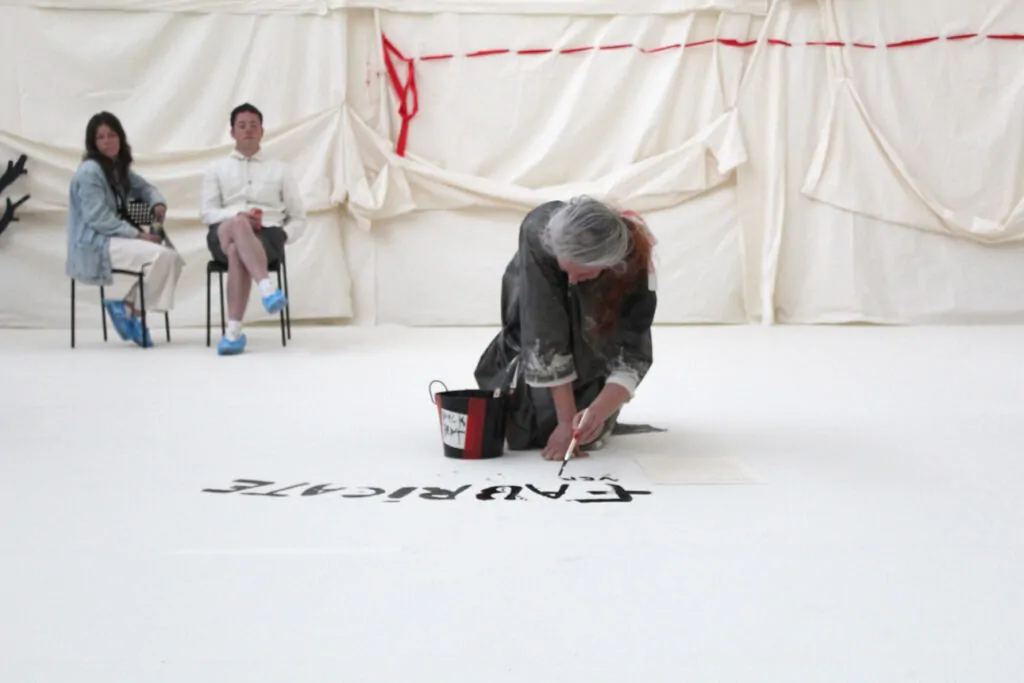
Courtesy of the artist and NCA (Newcastle Contemporary Art)
Credit Toby Lloyd
Language – especially handwritten text – features prominently in your installations. What is it about handwriting that continues to feel urgent or defiant to you in a digitised world?
Delaine Le Bas: Writing and text in the works are more mark making. I use both my hands, but predominantly my left hand, even though I am right-handed originally. Handwriting, even in letters and cards, is part of my practice; it is the hand literally in the work/works.
Textiles and embroidery have long been dismissed as domestic or “women’s work”. How intentional is your use of these mediums as political instruments of disruption and storytelling?
Delaine Le Bas: From a fashion and textiles perspective, many of the people involved are both male and female. Sewing & fabrics for me personally had this transportable aspect, both in being able to work anywhere in a confined space, but also for the work to contract and expand. A small piece of embroidery on a large cloth can be very loud in its content, expressive and disruptive.
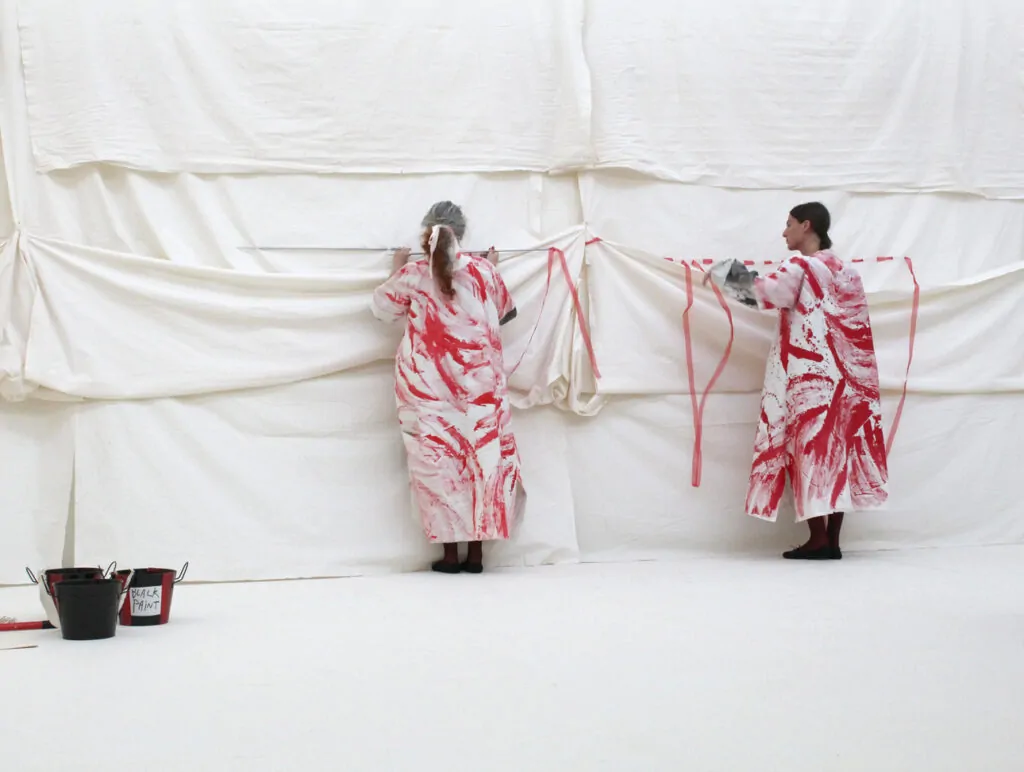
Courtesy of the artist and NCA (Newcastle Contemporary Art)
Credit Toby Lloyd
Your performances often avoid fixed beginnings or endings. What draws you to that kind of temporal openness, and how do you see performance complicating or expanding your visual installations?
Delaine Le Bas: Performance is an integral part of the work; it opens the space like a ritual and brings the works together for me. Often, what happens in the space with other materials during the performance brings elements together. Our bodies are in the space, when we leave the audience, over time become the performers in the space, their traces are left on the floors, the walls, it all becomes part of the history of the work while also being passed in the moment.

Courtesy of the artist and NCA (Newcastle Contemporary Art)
Credit Toby Lloyd
You’ve exhibited at major biennials around the world and recently had a solo show shortlisted for the Turner Prize. Do these institutional recognitions feel like validation – or are they sites of tension for someone whose work critiques the very structures they represent?
Delaine Le Bas: They are sites of both. The fabric architecture, as I have said, is creating a ‘safe space’ within these oppressive structures. I often do not know if that is fully understood… to create floors, walls and ceilings within a structure is a room within a room. It’s also about communication to speak to people, as many people as possible, you need to be in as many different places as possible to have these conversations or plant the seeds of future conversations.
The Turner Prize, for example, has opened up so many conversations with people that would not have been possible without being visible in that space. I know what Tate means, I know what its history is, what it was built upon, all of that was actually within the work as well. So many people that I have spoken to or who have contacted me since, understood this and read this within the work. Yes, there is also always a tension. I am not naive about this.
In Delainia: 17071965 Unfolding, you created a densely layered autobiographical universe. What does self-mythologising offer you as an artist and cultural commentator?
Delaine Le Bas: Self-mythologising enables me to be the narrator of my own narrative. I also bring to the table mythology and ask the question, is it mythology? Maybe it’s only one person’s idea that it is a myth? What is the truth?.
Your recent exhibitions invite audience participation, even physically through stitching or movement. How do you negotiate authorship when the public becomes part of the work?
Delaine Le Bas: The public is always part of the work, even in a painting show, you are not seeing the work in isolation, if you take a picture, someone else may be there, even from the back. Many times I work with collaborators, often the same people in terms of performance, with Hera Santos and Lincoln Cato often present, sound with Justin Langlands, film with Laszlo Farkas. We clearly recognise all the roles that each person has played within the work.
The public participation is always there for all of us as artists in some situations, I think it is more obvious than others. Authorship can be a difficult question I think you need to be in constant dialogue with everyone you work with, have ongoing conversations and listen to each other. To be clear with credits is very important, and to ask what collaborators would like for this to be.
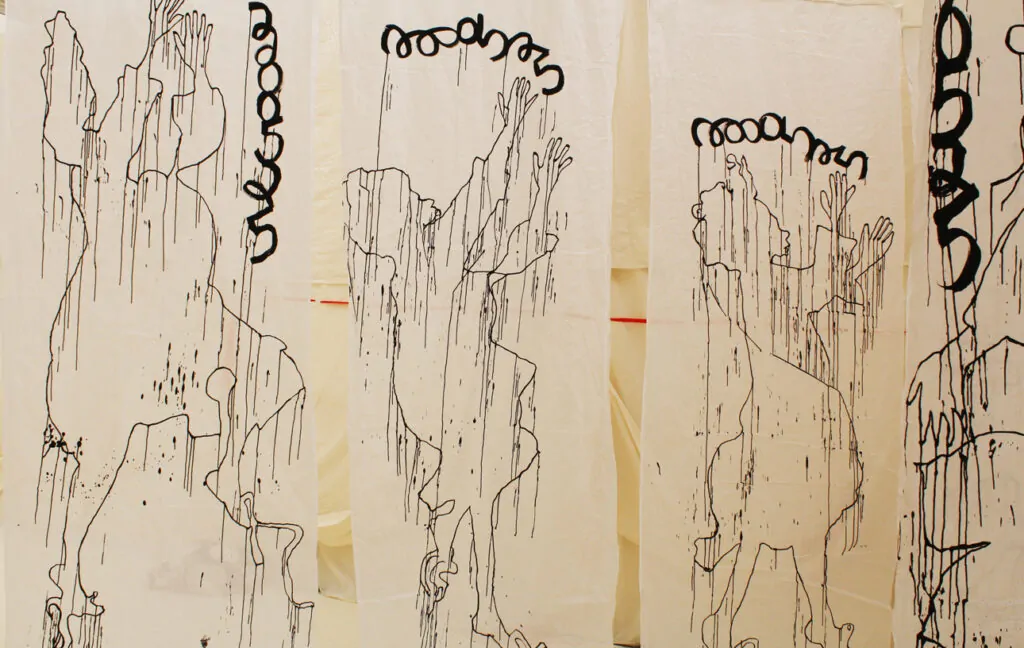
Courtesy of the artist and NCA (Newcastle Contemporary Art)
Credit Toby Lloyd
You’ve described your installations as acts of resistance. In the current climate of cultural and political division, what do you see as the role of art in shaping collective memory and belonging?
Delaine Le Bas: Space and allowing the space is ongoing. There is still so much to be done. Much in the past few years has been a knee-jerk reaction with little being done to really change the structures that have continually oppressed. We all need to keep working to change so that there is a sense of belonging for the many, not just the few and where collective memory and the memory of those who have been excluded are part of a dialogue that goes into the future.
Your collaborative work with your late husband, Damian Le Bas, was deeply influential. How does his presence, and your shared legacy, continue to inform your solo practice today?
Delaine Le Bas: Safe European Home? & Frontier De Luxe were our major projects together, sadly, their legacy and commentary on precarious circumstances, borders, control, oppression in the present time, in the current political climate internationally and the situation across Europe has declined greatly since we first created the work in 2011.
I find it depressing that as human beings we seem to learn nothing and that war and destruction of other beings is continuing all around us………The threads of all of this are still embedded within my works as these things sadly do not change
Finally, the phrase “fabricating my own myth” is loaded – with defiance, invention, authorship. What myths about identity, culture and history are you most committed to challenging – or rewriting – through your art?
Delaine Le Bas: For me, the identity myth. Identity is so complex for so many that there are no set boxes for anyone. The complexity of all of our stories is myriad and diverse, and the over simplistic nature of trying to fix things in one place is harmful to all of us. If we look at nature, the curves, water how it flows, we are the ones who create straight lines, boxes.
If we tarmac or concrete over a surface, nature will find its way through. We need to allow the many differences we have to flow and be seen for what they are. It is a radical thought for it not to be a box ticking exercise, there could never be enough boxes to try and contain it
Delaine Le Bas: Fabricating My Own Myth – Red Threads & Silver Needles opens on the 31st of May, 2025 until the 2nd of August, 2025 at Newcastle Contemporary Art
©2025 Delaine Le Bas


